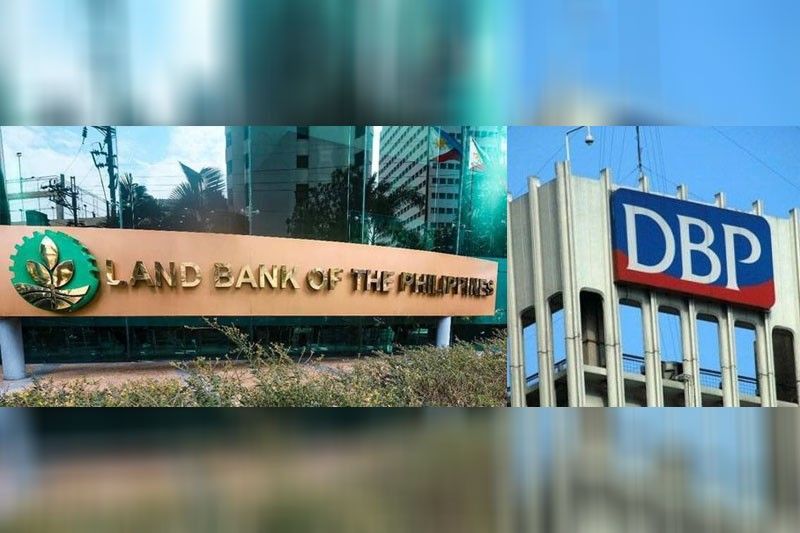Landbank-DBP to merge before yearend

MANILA, Philippines — State-run financing institutions Land Bank of the Philippines and Development Bank of the Philippines (DBP) are expected to merge before the year ends after President Marcos gave the green light to solidify the public banking sector amid the current global turmoil.
Finance Secretary Benjamin Diokno said Marcos has approved the proposed merger, which would effectively make the surviving entity Landbank surpass BDO Unibank Inc. as the largest banking entity in the country in terms of assets and deposit size.
“The President expressed the desire to merge the two to make the biggest bank in the country because of the recent financial developments abroad, and that’s really the best practice globally – the biggest bank is usually owned by the state,” Diokno said in a briefing yesterday.
In a statement, however, DBP maintained that no formal decision on the merger has been made.
DBP said any merger would require an act of Congress as both banks were created by enabling laws.
Landbank is mandated to finance the agriculture sector while DBP is focused on infrastructure development. Landbank’s assets stood at P3.1 trillion as of end-2022 while that of DBP was at a little over P1 trillion.
The merger of the banks is not new. Such a plan was started by the Aquino administration and resurfaced during the Duterte government. However, nothing materialized.
“The DBP echoes and shares the sentiments of President Marcos on the need to conduct a thorough and meticulous legal study on the proposed merger of DBP and Landbank,” DBP said.
“We assure the general public that the entire board of directors, management team and the rest of the public servants of DBP remain steadfast in serving the banking needs of our clients,” it said.
DBP added that it will continue to do so “with the same passion, dedication and commitment as we have done for the past 76 years.”
Amid the current banking turmoil globally, Diokno emphasized that there is a strong need to solidify government banks.
Earlier this month, the Silicon Valley Bank and Signature Bank in the US collapsed while Credit Suisse in Europe went down.
“We are not saying that Landbank and DBP have problems. Both are well performing. But we have to constantly seek better ways of doing things as policy makers,” Diokno said.
“This is also consistent with rightsizing the bureaucracy. If we are able to do this successfully, we will have more money for really essential projects such as healthcare, education and infrastructure,” he said.
Diokno admitted there will be employees to be affected, given the reduction in the number of bank branches. He added that employees can either retire under the Government Service Insurance System or be offered an “attractive package.”
However, the government has yet to provide the total number of employees to be affected by the merger.
Based on initial mapping, Diokno said only 22 branches of DBP would be retained. The plan is for Landbank to have a branch in all local government units in the Philippines.
Landbank already has 752 branches while DBP has 147. Diokno said the merger would create a bigger and stronger bank to better serve the country’s development needs.
It is also seen as creating a wider network of banking operations and eliminating redundancy and inefficiency.
Further, projected savings in operating costs due to the merger could reach at least P5.3 billion per year or over P20 billion in the next four years.
This does not yet include the sale of redundant assets of DBP properties, some of its offices, as well as income from the proceeds of such sale.
“As in any merger, we are doing this for the greater good. We do not want to employ people who are not doing anything. There are efficiency gains to be made,” Diokno said.
Moreover, he maintained that the improved financial position would provide a bigger headroom for loans that can be utilized for development projects.
The merger is also seen to help avoid the need for DBP to recapitalize from P30 billion to P100 billion and seek capital infusion from the national government.
“The merged bank will be in the best position to serve as the sole authorized government depository bank for the entire Philippine government and its instrumentalities,” Diokno said.
Sought for comment, Rizal Commercial Banking Corp. chief economist Michael Ricafort said mergers and consolidations have been encouraged in the local banking industry based on global best practices.
Ricafort emphasized that there is a need to consolidate and simplify the respective mandates of state-owned banks, as well as have better interoperability and presence especially in the countryside.
Last year, Landbank’s net income jumped by 38.2 percent to P30.1 billion, exceeding its P25.71 billion target, on the back of substantial interest income from loans and investments, alongside earnings from fees, commissions, and foreign exchange.
DBP, on the other hand, surpassed its 2022 target of P3.85 billion after it recorded a bottom line of P5.61 billion.
The full reopening of the economy that intensified lending activities fueled DBP’s performance, as well as growth in its total loans to borrowers and continued rise in net interest income.
- Latest
- Trending































